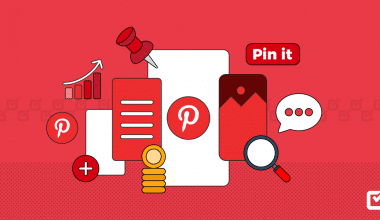These days, companies seek ways to operate in a market devoid of competitors rather than engaging in vicious competition with other businesses. This is exactly what the blue ocean strategy proposes, even though well-known companies used this strategy before a 2004 book gave it a name.
This article talks about how developing your market has aided the expansion of many businesses and how your company can reap the same rewards.
Additionally, this article is for business owners who prefer to build their market to competing markets.
What is Blue Ocean?
Blue ocean is a term used in the entrepreneurship industry that was developed in 2005 to describe a new market where there is little competition or opposition to innovators. The phrase alludes to the enormous “empty ocean” of market choices and opportunities that arise when a brand-new or unexplored sector of the economy or innovation surfaces.
The term “blue ocean” was first used in the 2005 book Blue Ocean Strategy: How to Create Uncontested Market Space and Make the Competition Irrelevant by INSEAD business school professors Chan Kim and Renee Mauborgne. According to the authors, markets with a high-profit potential are known as “blue oceans.”
But before we go further note that:
- A “blue ocean” is regarded as an untapped or uncontested market space from a marketing perspective.
- In their book, Blue Ocean Strategy: How to Create Uncontested Market Space and Make the Competition Irrelevant, Chan Kim and Renee Mauborgne first used the phrase.
- Blue ocean businesses frequently lead the way in innovation.
- “Red oceans,” which are characterized by fierce competition and crowded markets, are contrasted with “blue oceans.”
- The 150 blue ocean strategies used by businesses over the past 100 years are covered in Kim and Mauborgne’s book.
- The blue ocean strategy advises making minor changes to your products so they can enter their market with low prices and no rivals.
- Blue ocean strategies have helped many household-name companies achieve their current status, but the strategy can be risky.
- Identify pain points that only your company can solve to expand your current team and implement a blue ocean strategy.
What Does Blue Ocean Mean In Marketing?
The blue ocean strategy in marketing refers to the pursuit of differentiation and low cost at the same time to expand the market and generate new demand. The goal is to establish and control uncontested market space and eliminate competition in the process.
What Does Blue Oceans Mean in Business?
A blue ocean in business is an illustration of the greater and deeper potential that can be found in the untapped business territory. In terms of profitable growth, a blue ocean is vast, deep, and strong.
How the Blue Ocean Works
Companies compete with one another for every available market share in a mature industry. The competition is frequently so fierce that some businesses cannot survive. This type of industry depicts a saturated market that has been ravaged by competition as a red ocean. The opposite is true for blue oceans, which refers to the search for a market with little or no competition as many businesses decide to innovate or grow. Entrepreneurs are very interested in blue ocean markets.
In general, blue ocean markets have several qualities that entrepreneurs and innovators adore. A market with a pure blue ocean has no rivals. First-mover advantages, cost advantages in marketing with no competition, the freedom to set prices without regard to the actions of competitors, and the flexibility to take its offering in different directions are all advantages that a business leader in a blue ocean market enjoys.
What Are The 4 Strategies Of Blue Ocean Strategy?
Key components of the Blue Ocean Strategy include the following:
#1. It Goes Beyond Mere Theory:
Some models for strategic planning are based on theories that don’t always work out when going to market. Contrarily, the Blue Ocean Strategy was the result of a study that examined business successes and failures across more than 30 industries over ten years. It is founded on empirical data rather than conjecture.
#2. The Competition Is Unimportant.
When you adopt a blue ocean strategy, your objective isn’t to outperform the competition or dominate your sector. Instead, you want to create a new operating space within the boundaries of the industry, making the competition irrelevant.
#3. Low Cost And Differentiation Are Compatible.
According to the Blue Ocean Strategy, customers are not required to choose between affordability and value. Differentiation and low cost can both be attained if a company can determine what consumers currently value and then rethink how to provide that value. We call this “value innovation.”
#4. You Have A Structure For Evaluating Ideas.
The overall strategy includes the Blue Ocean Idea Index, which enables businesses to assess an idea’s potential for commercial success. This method reduces risk by assisting in the development of concepts and locating opportunities with the greatest potential.
What Is An Example Of A Blue Ocean Company?
The following are examples of companies that developed their blue oceans by focusing on offering highly differentiating products at reasonably low prices, which also increased barriers to entry for rival businesses. They also served as models for emerging industries at the time, which others later exemplified and imitated.
#1. Ford Motor Co.
Ford Motor Co. unveiled the Model T as the first mass-market automobile in 1908. There was only one color and one model available, but it was dependable, strong, and reasonably priced. At the time, only a few hundred automakers were producing custom-built vehicles, which were more expensive and less dependable. Ford developed a brand-new manufacturing procedure to produce cars in large quantities at a fraction of the cost of its rivals. By 1921, the Model T had a market share of 60%, officially displacing the horse-drawn carriage as the main mode of transportation, up from 10% in 1908.
#2. Uber:
Before Uber was established in 2009, people who didn’t have vehicles and needed a private mode of transportation had to primarily rely on taxis. But since its inception more than a century earlier, the taxi industry had not made many innovations. Due to the Taxi industry’s flaws, such as the few payment options, low level of customer trust, and lack of location tracking, the founders of Uber decided to develop a new kind of mobility service that would compete in a slightly different market. Uber sought out drivers who were willing to use their cars to provide on-demand rides requested via mobile apps rather than attempting to purchase its fleet of vehicles. Currently, Uber employs over 19,000 people and generates over $11 billion in annual revenue.
#3. Meta (Formerly Facebook):
Facebook’s new name would be “Meta,” according to CEO Mark Zuckerberg’s announcement in October 2021. When Facebook first launched, it was at the top of the social network market, which was its distinct blue ocean. Social networking has expanded into a red ocean more than ten years later. With the name change, Meta can direct its product offerings into the “metaverse,” a brand-new, thrilling, and uncharted territory. Zuckerberg imagines holograms, virtual reality, and digital environments that resemble the real world in the metaverse. Consequently, the idea of crossing over from the red ocean of social media to the blue ocean of the metaverse played a role in the decision.
#4. Apple Inc.
With the introduction of its iTunes music download service, Apple Inc. discovered a vast untapped market. Apple introduced the first legal music download format in 2003, even though billions of music files were being downloaded illegally each month. Users could purchase individual songs at a fair price, and it was simple to use. Apple converted millions of music listeners who had been downloading music illegally by combining better sound with search and navigation tools. Apple turned iTunes into a win-win situation for music creators, music fans, and Apple by opening up a new market and generating new revenue streams while improving accessibility to music.
#5. Netflix
Another example of a blue ocean company is Netflix, which in the 2000s completely changed the entertainment sector. Netflix pioneered the first streaming video platform supported by user subscriptions rather than entering the cutthroat market of video rental shops. The company first introduced mail-order video rentals and then many other businesses imitated Netflix in the wake of its success. Therefore, any new business attempting to introduce a video subscription model will encounter a red ocean rather than a blue one.
What are the 6 Principles of the Blue Ocean Strategy?
The six principles used to create the blue ocean strategy are listed below.
#1. Take A Look At Different Industries.
Businesses compete not only with one another but also with businesses from other industries that produce goods and services that are complementary to their own. Assuming that your products/services compete in a well-defined, stable industry with a very limited view of the environment is one of the biggest limitations you can impose on your organization. Finding alternative industries to your industry is the first step in creating a blue ocean strategy.
#2. Examine Various Strategic Groups
Organizations that pursue a similar strategy are grouped into strategic groups within their respective industries. A hierarchical structure built on the two criteria of price and performance is a feature of strategic groups. An organization must therefore determine why customers trade up for the higher group and down for the lower one by examining all strategic groups.
#3. Examine All Groups Of Buyers
Finding out who the industry’s chain of buyers is and which buyer segments your industry typically focuses on will help you develop a blue ocean strategy. How can you create new value if you switch the focus from one buyer group to another? By concentrating on the final consumers other than the field professionals some companies have been able to come up with products that are fancy-looking, easy to use, hassle-free, and portable.
#4. Examine Various Supplementary Products And Services.
An organization must consider what happens before, during, and after customers use its product or service. Competitors in most industries converge within the confines of their sector’s product and service offerings. You can identify the consumers’ pain points (constraints) by understanding the context in which your product or service is used and what occurs before, during, and after. You can then eliminate these pain points through a complementary product or service offering.
#5. Examine An Industry’s Functional-Emotional Orientation In General.
The emotional benefit that a customer derives from using or consuming a good or service is referred to as an emotional appeal to buyers. Ask questions like: What additional features do we provide that raise the price of our product without improving functionality? Can we produce a simpler, more useful, less expensive, lower-cost offering that would significantly increase buyers’ value by removing or reducing these factors? In developing a blue ocean strategy, these should be questioned.
Functional Appeal refers to the functional utility that customers receive from a company or product/service. One of two potential bases of appeal is where competition in a given industry tends to converge. What emotional components can we raise or develop to give our commodity products a dose of emotion and give them new life?
Therefore, knowing whether your industry prioritizes functionality or emotional appeal will help you decide whether to compete on functionality by adding emotional elements or on emotional appeal by removing functional elements.
#6. Follow The Trends
Many of us react to trends in our sector as soon as they start to have an effect. In other words, we develop defensive tactics that enable us to adjust to a shifting environment. All industries are susceptible to outside trends that have an ongoing impact on their operations. One can gain insights into how the trend(s) will change the value to customers and impact their organization’s business model rather than adapting gradually and somewhat passively. The trend must be significant to the business, irreversible, and have a clear trajectory to be evaluated over time.
Additionally, you can unlock previously unattainable levels of customer utility by understanding which trends are highly likely to have an impact on your industry, are irreversible, and are evolving in a clear trajectory.
What Is The Difference Between Red Ocean And Blue Ocean Markets?
A “red ocean,” as opposed to a “blue ocean,” refers to an environment of fierce competition among numerous industry players. Due to the abundance of competitors in the market, new businesses must contend vehemently for a piece of any profits.
Businesses operating in a “red ocean” will adopt very different business strategies from those operating in an exclusive market. Red ocean businesses focus on luring existing customers through marketing, lower prices, or better products rather than attempting to generate demand. Consider the market for insurance policies as an illustration. The majority of insurers sell nearly identical products and compete for customers by providing more alluring terms than their rivals.
CRO MARKETING: Detailed Guide To The Marketing Strategy
WHAT IS PER DIEM: What Is It, How It Works, Rate & Allowance
WHAT IS MARKETING CONCEPT: Meaning, Examples, Types & Strategy
Top 15+ PORTFOLIO WEBSITES 2023





